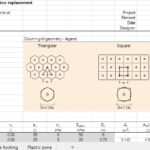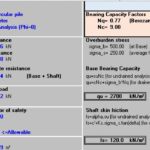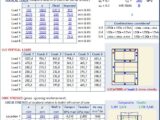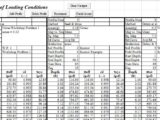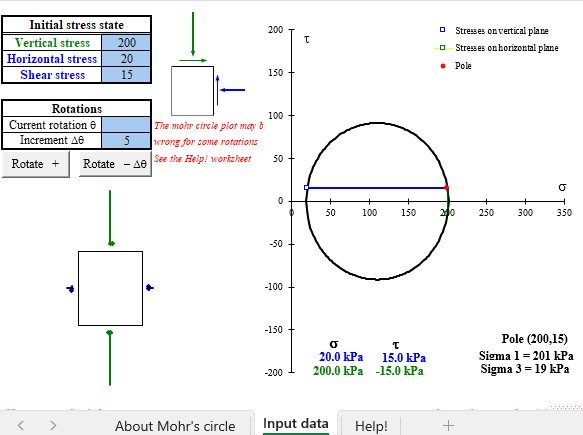
Mohr’s Circle Drawing Spreadsheet
2 February 2025Table of Contents
Mohr’s Circle Drawing Spreadsheet
Mohr’s Circle is a fundamental concept in mechanics and materials science, widely used in civil engineering to analyze and visualize stress states in structures. Named after Otto Mohr, a German engineer, this graphical method provides a clear representation of normal and shear stresses on various planes within a material. Understanding Mohr’s Circle is essential for engineers who design safe and efficient structures, as it helps determine stress distribution, principal stresses, and maximum shear stresses in materials under different loading conditions.
What is Mohr’s Circle?
Mohr’s Circle is a two-dimensional graphical representation of the state of stress at a point in a material. It allows engineers to:
- Determine principal stresses and principal planes
- Identify maximum shear stress
- Transform stresses for different orientations
- Assess material failure conditions
By plotting normal stress (σ) on the x-axis and shear stress (τ) on the y-axis, Mohr’s Circle provides a complete picture of the stress distribution, helping engineers make informed decisions about structural integrity.
How to Construct Mohr’s Circle
Constructing Mohr’s Circle involves the following steps:
- Identify the given stresses:
- Normal stresses (σx, σy) in the x and y directions
- Shear stress (τxy)
- Calculate the center of Mohr’s Circle:
- Center = (σx + σy) / 2
- Determine the radius of the circle:
- Radius = sqrt[((σx – σy) / 2)^2 + (τxy)^2]
- Plot the principal stresses and shear stresses on a graph
- Draw the circle passing through these points
With Mohr’s Circle, engineers can quickly visualize and interpret stress states without relying solely on complex equations.
Applications of Mohr’s Circle in Civil Engineering
1. Structural Analysis
Civil engineers use Mohr’s Circle to evaluate stresses in beams, columns, and other structural components. This helps in determining the strength and safety of a structure under various loads.
2. Material Failure Prediction
By analyzing the maximum shear and normal stresses, engineers can predict when a material will fail. This is crucial for selecting the right materials for bridges, buildings, and other infrastructure.
3. Soil Mechanics and Geotechnical Engineering
Mohr’s Circle is applied in soil mechanics to analyze stress conditions in soil under loading. It helps in understanding shear strength and stability of foundations, retaining walls, and slopes.
4. Concrete and Steel Design
In reinforced concrete and steel design, Mohr’s Circle aids in ensuring materials can withstand expected stress conditions without failure.
Conclusion
Mohr’s Circle is a powerful visualization tool that simplifies stress analysis in civil engineering. Its ability to transform and interpret stress states makes it invaluable in designing safe and reliable structures. Engineers who master Mohr’s Circle gain a significant advantage in analyzing material behavior and preventing structural failures.
For a practical tool to generate Mohr’s Circle, check out this Mohr’s Circle Spreadsheet, which automates calculations and helps visualize stress conditions efficiently.




